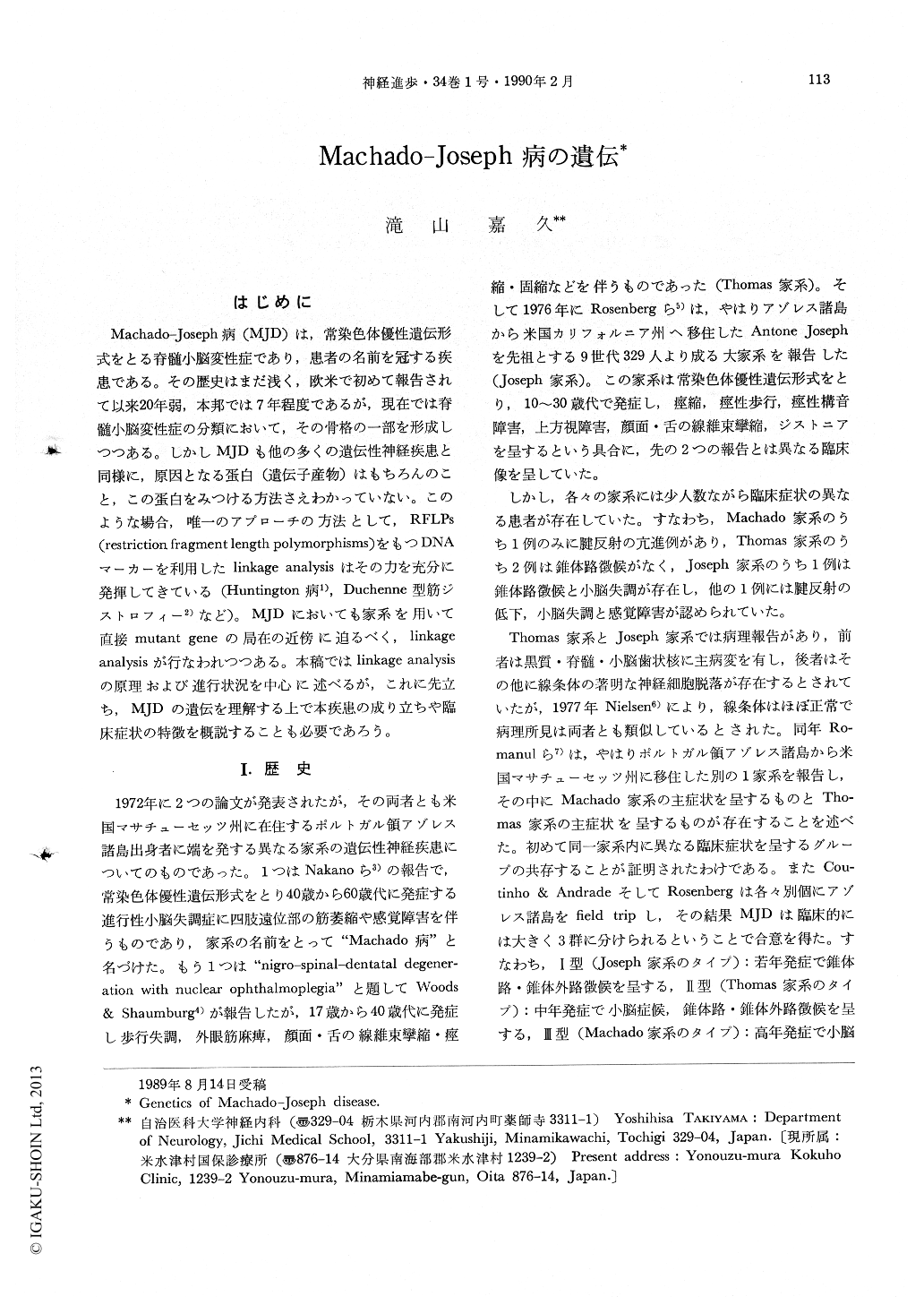Japanese
English
- 有料閲覧
- Abstract 文献概要
- 1ページ目 Look Inside
はじめに
Machado-Joseph病(MJD)は,常染色体優性遺伝形式をとる脊髄小脳変性症であり,患者の名前を冠する疾患である。その歴史はまだ浅く,欧米で初めて報告されて以来20年弱,本邦では7年程度であるが,現在では脊髄小脳変性症の分類において,その骨格の一部を形成しつつある。しかしMJDも他の多くの遺伝性神経疾患と同様に,原因となる蛋白(遺伝子産物)はもちろんのこと,この蛋白をみつける方法さえわかっていない。このような場合,唯一のアプローチの方法として,RFLPs(restriction fragment length Polymorphisms)をもつDNAマーカーを利用したlinkage analysisはその力を充分に発揮してきている(Huntington病1),Duchenne型筋ジストロフィー2)など)。MJDにおいても家系を用いて直接mutant geneの局在の近傍に迫るべく,linkageanalysisが行なわれつつある。本稿ではlinkage analysisの原理および進行状況を中心に述べるが,これに先立ち,MJDの遺伝を理解する上で本疾患の成り立ちや臨床症状の特徴を概説することも必要であろう。
Machado-Joseph disease (MJD) is known as an autosomal dominant disorder among the Portuguese and their descents. Although the majority of known cases were reported in Portuguese families, a few cases were found in black Americans, Italian Americans, Indians and so on. Also in Japan, more than 20 families with MJD have been reported. Now, Japan is considered to be one of the biggest forcuses of MJD in the world.
Clinical manifestations are characterized by variable combinations of cerebellar ataxia, progressive external ophthalmoplegia, pyramidal signs, dystonia, rigidity, amyotrophy, and peripheral neuropathy.

Copyright © 1990, Igaku-Shoin Ltd. All rights reserved.


